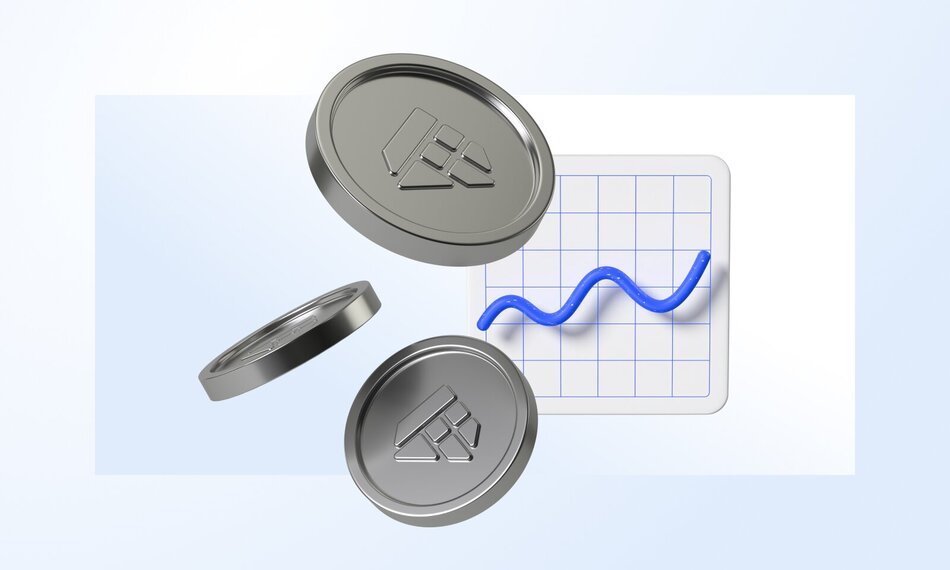The basic premise of investing is straightforward: you invest money expecting to receive more when it’s time to cash out. Therefore, when purchasing real estate, you look forward to making a profit at the time of sale. Can you be confident of this before acquiring an investment? The Internal Rate of Return (IRR) aims to determine that.
If you’ve been wondering if IRR is valuable for real estate investing, how it works, and what its applications are, you’re in the right place. We’ll break down everything you need to know to understand the Internal Rate of Return.
What is IRR?
Given that we don’t have a crystal ball to see into the future, and the economy can change in unpredictable ways, there’s no way to know the true return on your investment. What savvy investors, from multinational corporations down to the small-time landlord, do is make informed predictions.
Enter the Internal Rate of Return. IRR is a discounted cash flow analysis that shows the break-even point and estimates the profitability of potential investments, including real estate.
IRR measures the annual growth rate of a potential investment. Knowing if the investment returns could be high, low, or nonexistent helps investors decide whether to acquire a specific project.
IRR is calculated using the same concept as net present value (NPV), except it sets the NPV equal to zero. It’s essentially the annual growth rate an investment is anticipated to have.
To understand IRR, you’ve got to understand net present value. NPV measures the difference between the present value of cash inflows and cash outflows over time. So, for real estate investing, the inflows include tenant rents, while outflows could be mortgage service payments, capital expenditures, and maintenance.
NPV helps determine whether a business should invest based on the amount of cash that an investment is expected to generate. In other words, NPV projects how much money a company or investor can expect to gain or lose by investing in a project.
You need to know the discount rate to grasp the IRR. Future money is worth less than the money earned today. For investors, the discount rate calculates how much to discount future cash flows when calculating an investment’s present value. This provides a better understanding of a property’s projected cash flow based on known current economic conditions.
The core purpose of the Internal Rate of Return (IRR) is to ascertain the rate at which a particular investment yields returns. You can think of it as the expected compound rate of return. A higher IRR has a better potential for profitability. IRR considers all cash flows—positive or negative—associated with a project and the required rate of return that would make all cash flows equal to zero.
For all these reasons, IRR has been hailed as one of the more reliable methods for measuring risk-adjusted returns. Real estate investors should consider it when assessing investment properties or capital expenditure decisions.
How is IRR calculated?
To calculate IRR, you’ll need the following two factors:
- Cash Flows, which include expected cash outflows and inflows
- Total Initial Investment Costs
Once you have the two factors, you’ll use them to create the IRR formula.
First, you’ll set the NPV to zero. This is because you’re solving for the discount rate.
Next, divide the future value by the present value.
That amount is raised to the inverse power of n, or 1 ÷ n, where “n” represents the number of periods the investor holds the investment.
Subtract one from the resulting figure.
The IRR Formula can be expressed as Internal Rate of Return (IRR) = (Future Value ÷ Present value)^(1 ÷ Number of Periods) – 1You can input your numbers into an IRR calculator to simplify the process.
When running the IRR Formula, investing always incurs a cost, and the initial payment is an outflow. Whether future cash flows are positive or negative depends on how accurately we predict the project’s return and any additional capital required for its success.
IRR and Excel
Because of its complexity, running the IRR formula by hand takes trial and error to get the NPV to zero. Instead, many financial analysts and investors rely on calculating software to arrive at the IRR. You can use a financial calculator, or Microsoft Excel offers an IRR function that does the work for the investor.
Utilizing Excel’s IRR function simplifies calculating the Internal Rate of Return. You can easily enter your cash flows with only a few clicks to acquire the desired discount rate. To access this feature, press the Formulas Insert (fx) icon, and voila! Excel will take care of all the hard work for you – no further effort is required from your end.
Now, the Excel function does have two other related IRR calculations, the XIRR function and the MIRR function:
The XIRR (Extended Internal Rate of Return) formula can be used to calculate the internal rate of return when cash flows are not regular. The function accounts for daily compounding interest and multiple cash flows.
The MIRR (Modified Internal Rate of Return) formula calculates the internal rate of return when there are multiple cash flows. For example, if capital is reinvested or borrowed at a different interest rate. It will also include the cost of any capital.
What are the applications of IRR?
IRR can evaluate various investments, including stocks, bonds, mutual funds, etc. It’s especially beneficial for real estate investments, where IRR helps investors determine the value of the project.
When assessing capital investments, IRR is often used to compare the potential returns of establishing a new business versus growing an existing one. For instance, as part of its decision-making process, an asset management company might use IRR when weighing whether it should acquire another multifamily portfolio or increase its net operating income (NOI) by modernizing the properties they have already.
Companies rely on IRR when evaluating stock buyback programs to ensure that allocating funding towards repurchasing their shares is a more profitable investment than any other alternative use of funds, such as creating new outlets or acquiring other companies. Businesses must show that the company’s stock has a higher return on investment (ROI), therefore having an appropriate and reliable internal rate of return.
Investors can compare different assets, such as real estate to stocks, to get the best possible rate of return on their capital. By doing so, investors can make more informed investment decisions.
Investing with IRR
Understanding and utilizing IRR can be of great value when deciding if an investment should go ahead. The IRR Rule states that any project or investment with an annual rate of return greater than the minimum required return should be accepted, while those with a lower annual rate should be rejected.
Frequently, investors use IRR with a hurdle rate – the least amount of returns needed. Investors see that the project adds value by seeing if the IRR increases relative to the hurdle rate. Most organizations use their Weighted Average Cost of Capital (WACC) as the standard benchmark for hurdle rates.
This makes it easier for investors to decide whether or not a project is worth the risk based on its expected annual growth rate. Investors can also use it to assess the profitability of different investments with periodic cash flows. They can be compared to see which has the potential to yield the best returns.
Is there a “good” IRR?
The good news is that there isn’t one set number or figure considered ‘good’ regarding IRR. It will depend on the type and size of the project, as well as the investor’s preferences and requirements.
You want a positive IRR—a negative IRR indicates you’d lose money on the investment. Generally, an IRR of 18% or 20% is considered very good in real estate.
Generally speaking, a high percentage return (greater than 10%) indicates a successful investment, while a low IRR (less than 5%) might mean investors should reconsider their investment options.
Advantages of IRR
IRR is a versatile tool that can be applied to many investments. The most significant advantage of using IRR for capital budgeting decisions is that it considers all changes in cash flows throughout an investment cycle and computes a figure that reflects your initial capital expenditure and any sales proceeds gained.
Additionally, understanding and utilizing IRR allows investors to compare different investments against each other to make the most informed decision based on profitability. The various functions enable investors to play around with the holding period to see when they break even.
Disadvantages of IRR
IRR doesn’t measure external factors like inflation or the cost of capital. In addition, IRR assumes that all cash flows are reinvested at the same rate as the discount rate, which is not always realistic given market fluctuations over time.
Additionally, depending on the project or investment, different cash flows may be hard to forecast accurately, leading to inaccurate annual growth rate calculations. IRR has limitations when evaluating investments that produce uneven cash flow streams, such as projects with multiple development stages.
Estimating the IRR includes an unpredictable component as you are conjecturing how much cash flow will be generated from the property and predicting the overall market performance.
What’s better, IRR or CAGR?
The answer depends on the type of investment or project being evaluated. Generally speaking, CAGR (compound annual growth rate) is better suited for investments with a consistent annual cash flow stream, such as those that yield a steady annual return over time. The IRR evaluates more complex investments, such as those with varying cash flows. Both methods help measure profitability, but it’s essential to understand which is best suited for your particular investment scenario.
Should you use IRR or ROI?
ROI (Return on Investment) is another metric used to measure profitability. ROI is a simple calculation that considers only the initial capital expenditure and final sales proceeds from the investment project. In contrast, IRR considers all cash flow changes over time. So, the ROI doesn’t account for the time value of money.
Figuring out ROI is more straightforward, but the IRR gives you a better measure over time. If you’re looking for a more comprehensive evaluation of your investment that looks at projected cash flow and appreciation, then IRR is better.
Example of IRR in real estate
The internal rate of return is a valuable metric for gauging the potential of any investment. It’s a reliable method utilized to analyze capital projects and modifications and how they might affect total costs.
Let’s see an example of how IRR can be applied to real estate investments.
An investor purchases two rental properties and expects cash flow from the monthly rent payments. He puts out $200,000 over five years, including initial investment. Property A starts generating positive cash flows in its 4th year of holding, while Property B starts generating positive cash flows in its first year. Both end up with a $300,000 ROI by year 5, but at different times. Property B’s IRR is higher because it generates profits earlier than Property A’s.
Using the IRR
The bottom line is that the IRR formula is an essential tool in financial analysis that can help investors and analysts understand the profitability of potential investments. IRR measures the annual growth rate of an investment, taking into account any positive or negative cash flows associated with it over time. Use IRR calculations to assess your next real estate investment and ensure you’re maximizing your resources!
Easily invest in real estate with Arrived
At Arrived, we aim to make real estate investing easy and hassle-free. We’ve created a revolutionary way for investors to purchase shares of properties and earn dividends from rental income, with the potential to build equity through home appreciation—all without dealing with real estate agents, lenders, or property management companies. That’s right! For as little as $100, you can enjoy all the benefits of real estate investing without the stress. Browse available properties to start investing today.









